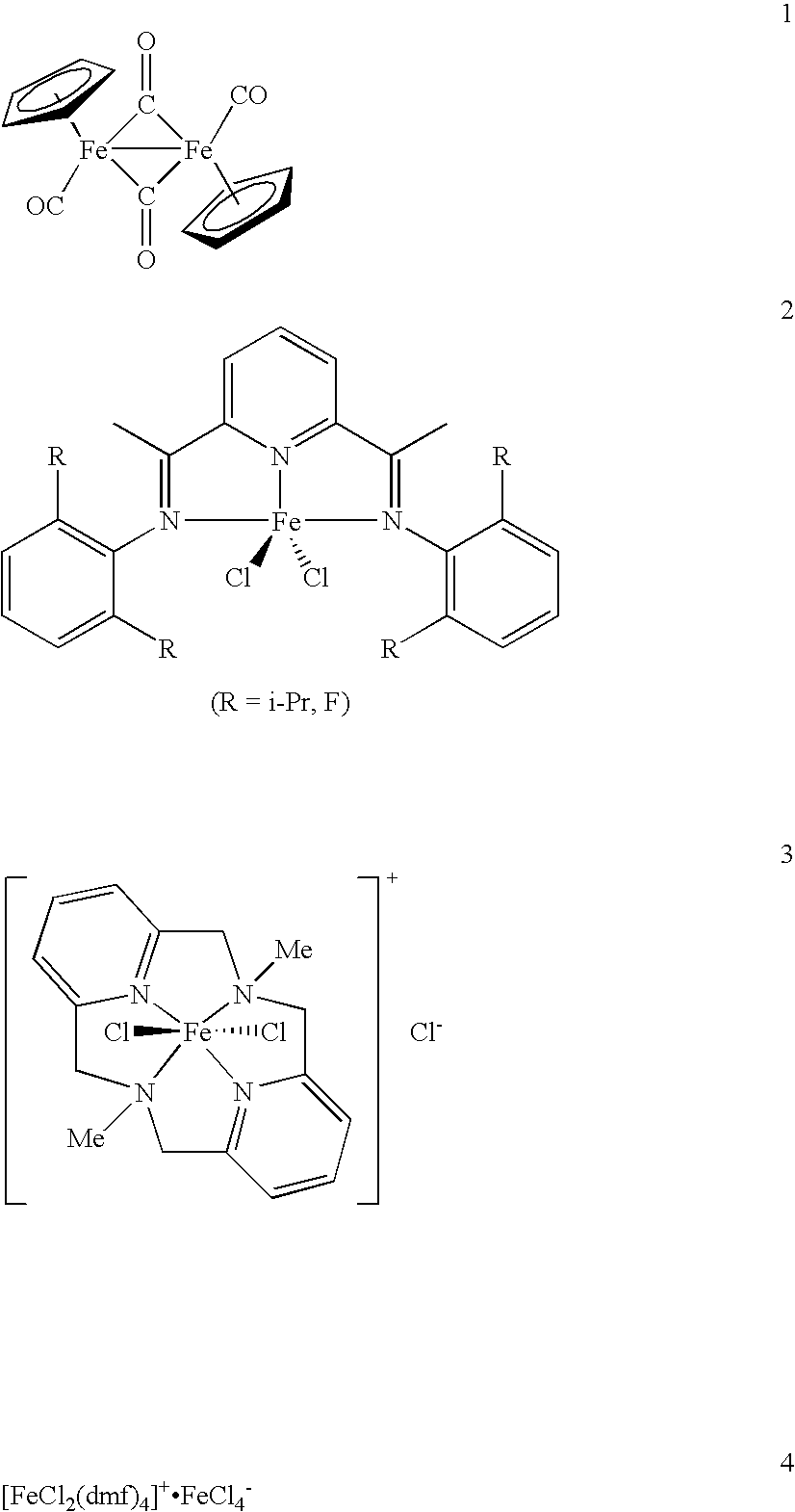Process for production of aromatic compounds
a technology of aromatic compounds and production processes, applied in the field of aromatic compound production processes, can solve the problems of inability to achieve high yield, process cannot be applied in the field of medical drugs or agricultural chemicals, and cannot achieve the effect of synthesis of aromatic compounds, and achieve the effect of inexpensive and readily available iron catalysts
- Summary
- Abstract
- Description
- Claims
- Application Information
AI Technical Summary
Benefits of technology
Problems solved by technology
Method used
Image
Examples
example 1
[0284] Following the details given below, effects of the additives on selectivity and yield of the products were examined.
[0285] First, 0.96-M THF solution of phenyl magnesium bromide (1.25 mL, 1.2 mmol), various additives (1.2 mmol) shown in TABLE 1 below and bromocycloheptane (177 mg, 1.0 mmol) (shown by “1” in TABLE 1 below) were charged in a 50-mL glass tube equipped with a magnetic stirrer and cooled to −78° C. At this temperature, 0.1-M THF solution of FeCl3 (0.5 mL, 5 mol %) was added to the mixture. The resulting solution was put in an ice bath and stirred at 0° C. for 30 minutes. Saturated aqueous solution (0.5 mL) of NH4Cl was added to terminate the reaction. After conventional treatments, the amount of bromocyclopentane consumed and the yields of compounds produced (shown by “2,”“3” and “4” in TABLE 1 below) and biphenyl were determined by gas chromatography (internal standard (n-decane, 71 mg, 0.5 mmol)). The results are shown in TABLE 1.
TABLE 1% yieldentryadditive234...
example 2
[0288] Next, various iron compounds available as catalyst precursors were selected.
[0289] Specifically, the procedures were conducted in a manner similar to EXAMPLE 1, except that various iron catalysts shown in TABLE 2 below were used as the iron catalyst and TMEDA was used as the additive. The results are shown in TABLE 2.
TABLE 2Iron catalyst - coupling reaction using various catalyst precursors% yieldentrycat. Fe2341Ph—Ph10FeCl371193trace1011FeF300097212Fe(acac)31461711013FeCl232101561014Fe(CO)5tracetrace0955
[0290] In TABLE 2, “Fe(acac)3” is short for iron (III) acetylacetonate complex.
[0291] It is understood from TABLE 2 that when FeCl3 was used, alkylated aromatic compounds can be produced most efficiently.
example 3
[0292] Next, using various alkyl halides and Grignard reagent, it was attempted to introduce a wide variety of alkyl groups into aromatic rings.
[0293] Specifically, the procedures were conducted in a manner similar to EXAMPLE 1, except that FeCl3 was used as the iron catalyst, TMEDA was used as the additive and other reagents were used as given in TABLE 3.
[0294] In the table, the reaction was carried out under the slow addition conditions of a 1-mmol scale, unless otherwise indicated.
[0295] In the table, the reaction was carried out at the temperature of 0° C. in Entry Nos. 15-17, 25, 28 and 31-35 and at the temperature of 25° C. in Entry Nos. 18-24, 26 and 29, unless otherwise indicated.
[0296] In the table, Grignard reagent was used in an amount of 1.2 equivalents, unless otherwise indicated.
[0297] In the table, the yield was determined by gas chromatography using an internal standard or 1H NMR, unless otherwise indicated. The results are shown in TABLE 3.
TABLE 3entryalkyl h...
PUM
| Property | Measurement | Unit |
|---|---|---|
| temperature | aaaaa | aaaaa |
| temperature | aaaaa | aaaaa |
| temperature | aaaaa | aaaaa |
Abstract
Description
Claims
Application Information
 Login to View More
Login to View More - R&D
- Intellectual Property
- Life Sciences
- Materials
- Tech Scout
- Unparalleled Data Quality
- Higher Quality Content
- 60% Fewer Hallucinations
Browse by: Latest US Patents, China's latest patents, Technical Efficacy Thesaurus, Application Domain, Technology Topic, Popular Technical Reports.
© 2025 PatSnap. All rights reserved.Legal|Privacy policy|Modern Slavery Act Transparency Statement|Sitemap|About US| Contact US: help@patsnap.com



